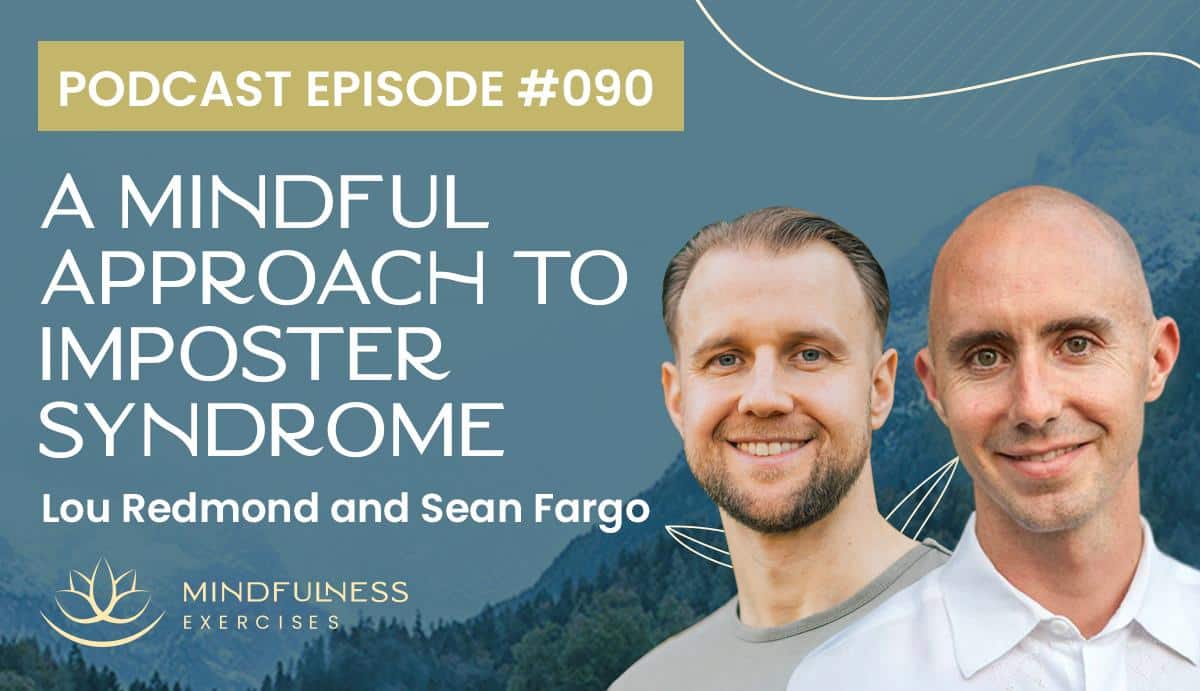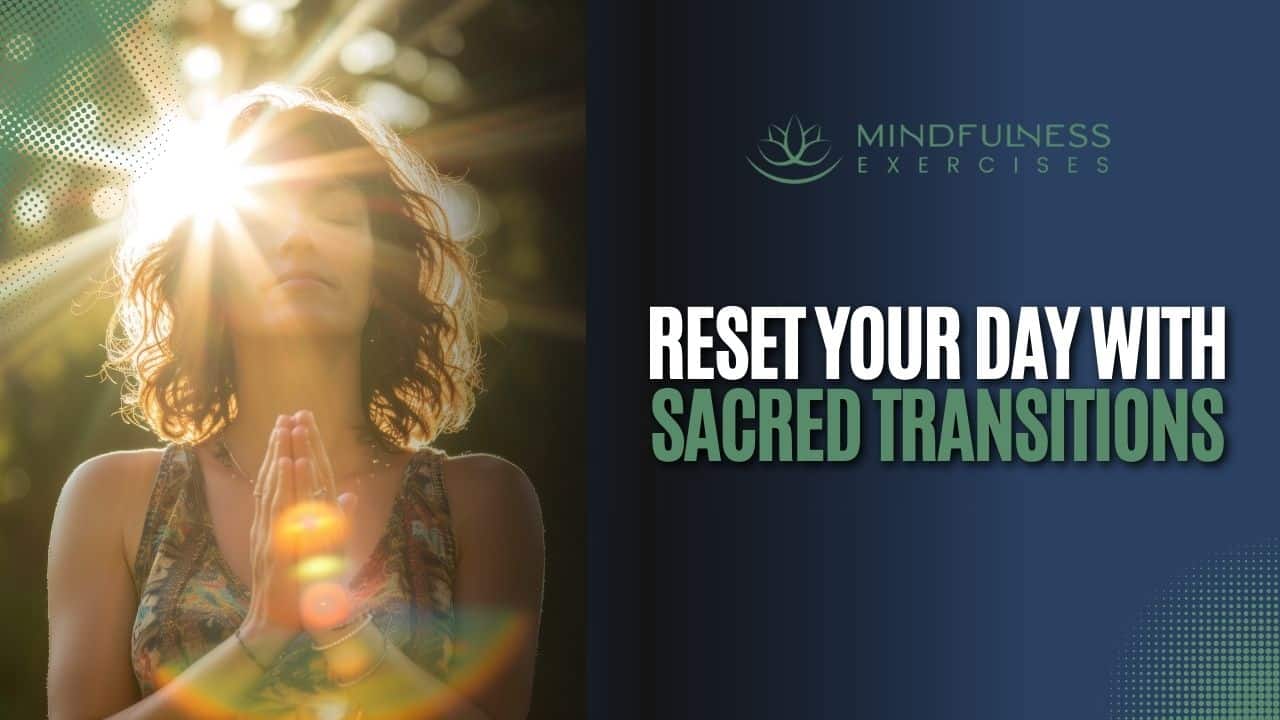Listen now

Imposter syndrome is felt by new and experienced mindfulness teachers alike. It is a common human experience. Of course, we’d prefer not to feel uncomfortable, and instead, to feel ever-confident in our practice and teachings. In reality, however, imposter syndrome need not be overcome.
By taking a mindful approach to imposter syndrome, we can welcome it as an indicator of our care, humility, courage and growth.
In this episode, Sean Fargo speaks with Lou Redmond, meditation teacher, author, and host of the mindfulness podcast, The Art & Business of Meditation. Lou shares suggestions on how we might transform and transcend the experience of imposter syndrome, instead of overcoming it.
What You’ll Learn in This Episode:
Show Notes & Quotes:
Why it helps to begin teaching before we feel confident
It’s common to want to wait until we feel confident before teaching mindfulness and meditation. However, confidence arises from competence - and competence only comes about through practice. So, how are we to practice teaching before confidence sets in? We start with courage.
“What we’re really looking for is not to feel more confident, but to be able to call on our resource of courage more. Because courage says, ‘I don’t feel confident right now. I actually am feeling a little afraid, or I’m feeling a little imposter syndrome, but you know what? I know that this is something that I want to share with people, I know that it has helped me and I know that it can help other people.’”
Normalizing the feeling of imposter syndrome
Imposter syndrome can be an extreme, intense feeling. This does not make it rare, abnormal, or unique to you alone. Feelings of inadequacy are a shared human experience. By normalizing imposter syndrome, we decenter ourselves from the experience and soften the ego. After all, teaching mindfulness is not about demonstrating what we know, but helping others to discover what they know.
“When we make it about something bigger than ourselves, when it’s not about our ego and whether we’re the most qualified for it and we make it about ‘Can this be of service? Can this help other people?’ It can kind of help us get out of our own way.”
Transforming our perspective of imposter syndrome
Imposter syndrome may arise from some uncomfortable feelings of unworthiness, but within that discomfort is a kernel of humility. We tend to focus on discomfort, but with mindfulness, we can choose to focus instead on the benefits of wanting to be good at doing good. After all, what imposter syndrome shows us is that we care.
“You actually care. You care about what you’re going to be doing so much that you have a concern with doing it safely. You have a concern with doing it properly. You actually care. Because this is the irony, actual imposters don’t care that they’re imposters. [...] So, the fact that you’re feeling imposter syndrome means that you care.”
How imposter syndrome shows us we are growing
A healthy relationship with imposter syndrome includes acknowledging and accepting our fear and it can serve as an indicator of growth. For once we have experience teaching, we could easily stay within our comfort zone, no longer learning or experimenting. To be a leader, however, requires us to courageously step into the unknown.
“I seek imposter syndrome out because when I’m feeling it I know that I’m on that edge. [...] And so, if you can feel the imposter syndrome and [...] if I can shift that perspective, I can welcome it and I can say, ‘Wow, this is really growing me, what an opportunity here. This is me being in the gym of my purpose. Me being in the gym of my service. I actually have to stress the muscles a little bit.’ That’s how I’ve kind of ninja’d my way around imposter syndrome.[...] I actually don’t want it to go away.”
What to practice to develop teaching competency
Overcoming imposter syndromes starts with courage. It takes courage to begin to practice teaching, despite fear, nervousness or hesitancy. But what is it we should be practicing as new, inexperienced teachers? Lou recommends we begin teaching live (even if online) versus merely recording our sessions.
“You could reach out to different libraries and community centers, YMCA’s. It takes effort to seek those things out and so that’s another flex in just putting yourself out there and being ok with rejection. But, it could just simply be the people closest to you, and getting some kind of routine to just slow down with people and start to feel comfortable guiding people.”
The creative process of guiding meditations
In terms of how to structure our first guided meditations, we could start simply by exploring the Four Foundations of Mindfulness, or even just the first, mindfulness of the body. For Lou, structuring a guided meditation is like creating a painting. The length of the meditation is similar to the boundaries of the canvas. Your palette consists of different meditation styles, versus an array of colors. What you do with those styles within the allotted time frame is up to you.
“I have different things that I can weave in depending on what I’m wanting to offer. And then the painting, what actually is created with those colors, which we all have, is endless. There are so many opportunities to create something that’s unique with these basic elements. [...] So, if it helps to see it as an art, see it like a songwriter signing a song, you just found your art in meditation.”
Remembering you’re not the teacher for everyone
Part of imposter syndrome can be the fear that not everyone will like us or like our teaching, and that’s ok. Just as we have teachers who we feel more connected to than others, everyone is going to be attracted to a different teacher. If our ultimate intention is to help people become more aware, find deeper connection and greater presence, we’ll support them doing so whether with us or someone else.
“I like to use the analogy that I live in New Jersey, right across from Manhattan pretty much, and I can take five ways to get to Manhattan, but it all gets me to the same place. So, there’s many ways to the truth and many ways that we can lead people into connecting to themselves.”
Additional Resources:
Sponsored by our Mindfulness Meditation Teacher Certification Program
MindfulnessExercises.com/Certify

About Lou Redmond:
Lou Redmond is an author, meditation teacher, life coach, and inspirational speaker. His book, Find Your Truth: A Modern Day Story About Letting Go of Addiction and Finding Life’s Purpose, encourages readers to find their own definition of success, and to achieve it by following practical steps.
Lou has been leading meditation since 2015, after experiencing a sudden awakening through the practice. His teachings span wisdom traditions and focus on empowering others through authenticity and vulnerability. His honest and relatable approach offers hope and guidance to those on the path. His meditations have been listened to over 1 million times and over 50,000 students have enrolled in his online courses.
With his coaching programs and podcast, The Art & Business of Meditation, Lou helps people make an impact, and income, using meditation. Lou is also the founder of One Mindful Education, an organization that brings meditation, yoga, and mindfulness into schools across the country.



